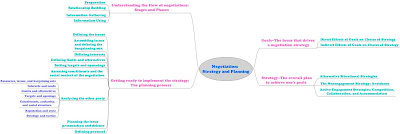One of tools negotiators can use to give themselves an advantage or increase the probability of achieving their objectives is a ‘power’. Many negotiators believe that power is very important in negotiation and who have this power usually understand how to put pressure on the other party, how to persuade the other party to change their mind.
Where could negotiators get the power or the capabilities to give themselves an advantage?
- Negotiators can get the power from information sources of power; negotiators can assemble and organize facts and data to support their position, argument and desired outcomes.
- Negotiators can get the power from personal sources of power; they can acquire power from their psychological orientation, cognitive orientation, Motivational orientation, Dispositions and Skills and Moral orientation.
- Negotiators can get power from their position in an organization. They can gain the power from their responsibility, duties or position of the job. Also, power can come from creating a resource stockpile in an environment where resources appear to be scarce.
- Power can come from the relationship. Negotiators goal interdependence, Referent power, Networks can also have an impact on how negotiators constructively use their power.
- The power can come from the contextual sources of power. Power can be based in the context, situation, or environment in which negotiators take place.
Negotiators should treat power as the potential to alter the attitudes and behaviors of others that an individual brings to a given situation. Power is implicated in the use of many negotiation tactics, such as hinting to the other party that you have good alternatives (a strong BATNA) in order to increase your leverage. In general, people have power when they have “the ability to bring about outcomes they desire” or “the ability to get things done the way them to be done.”












